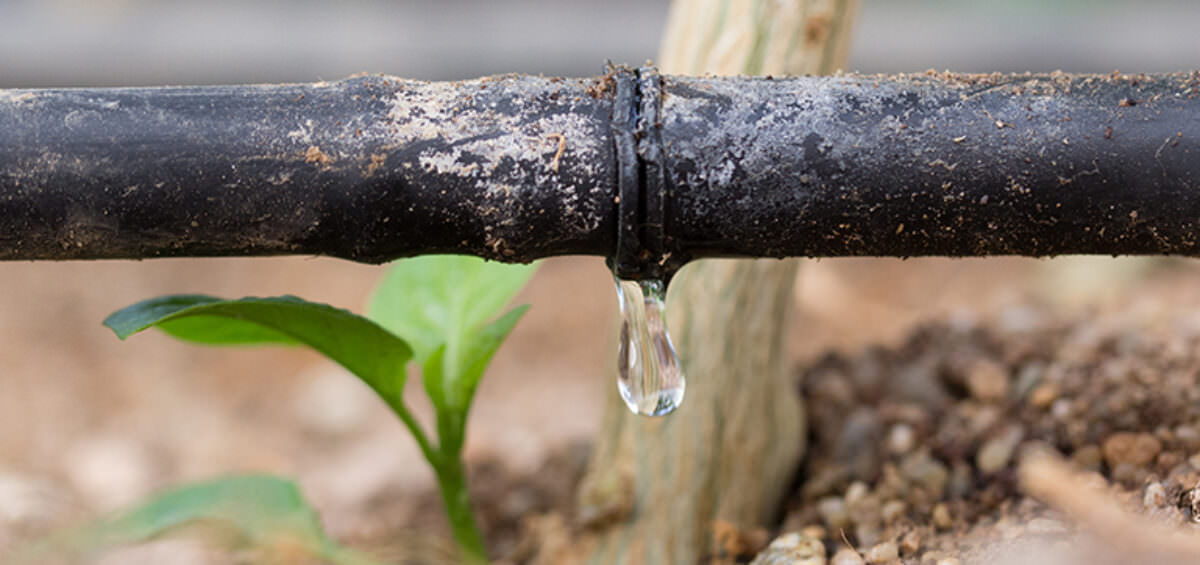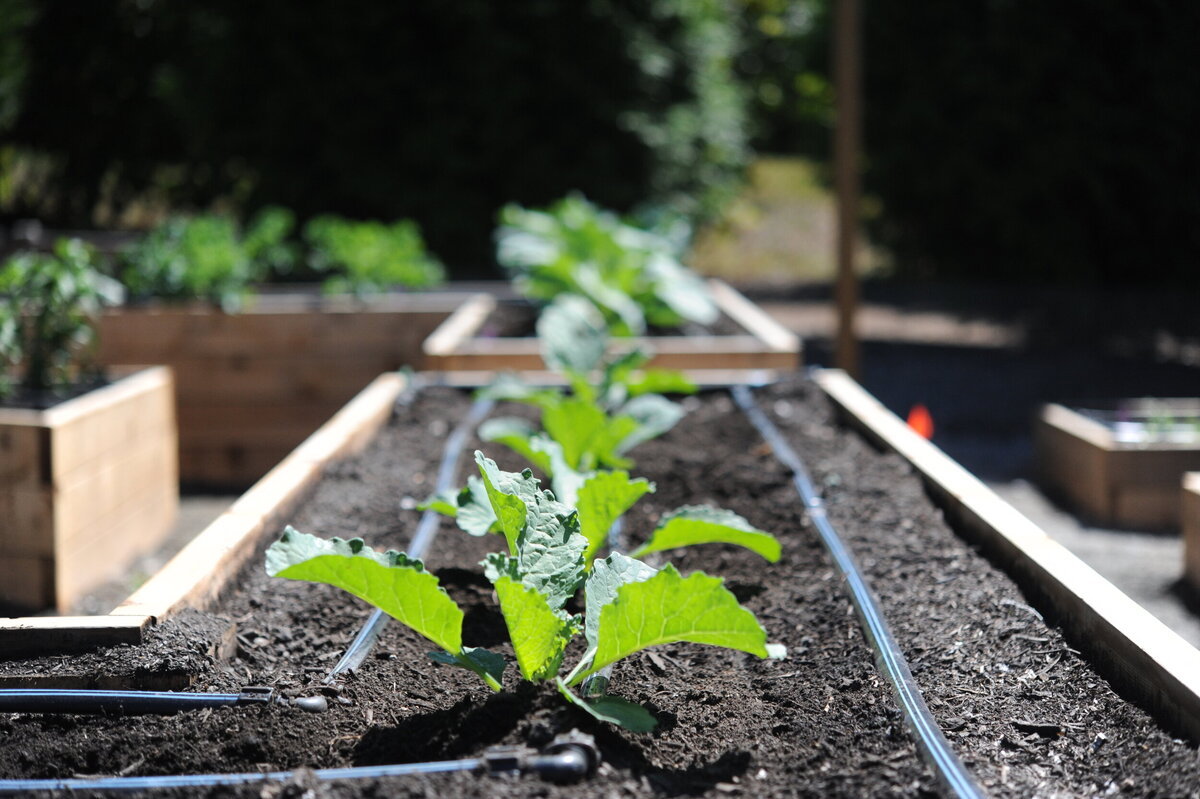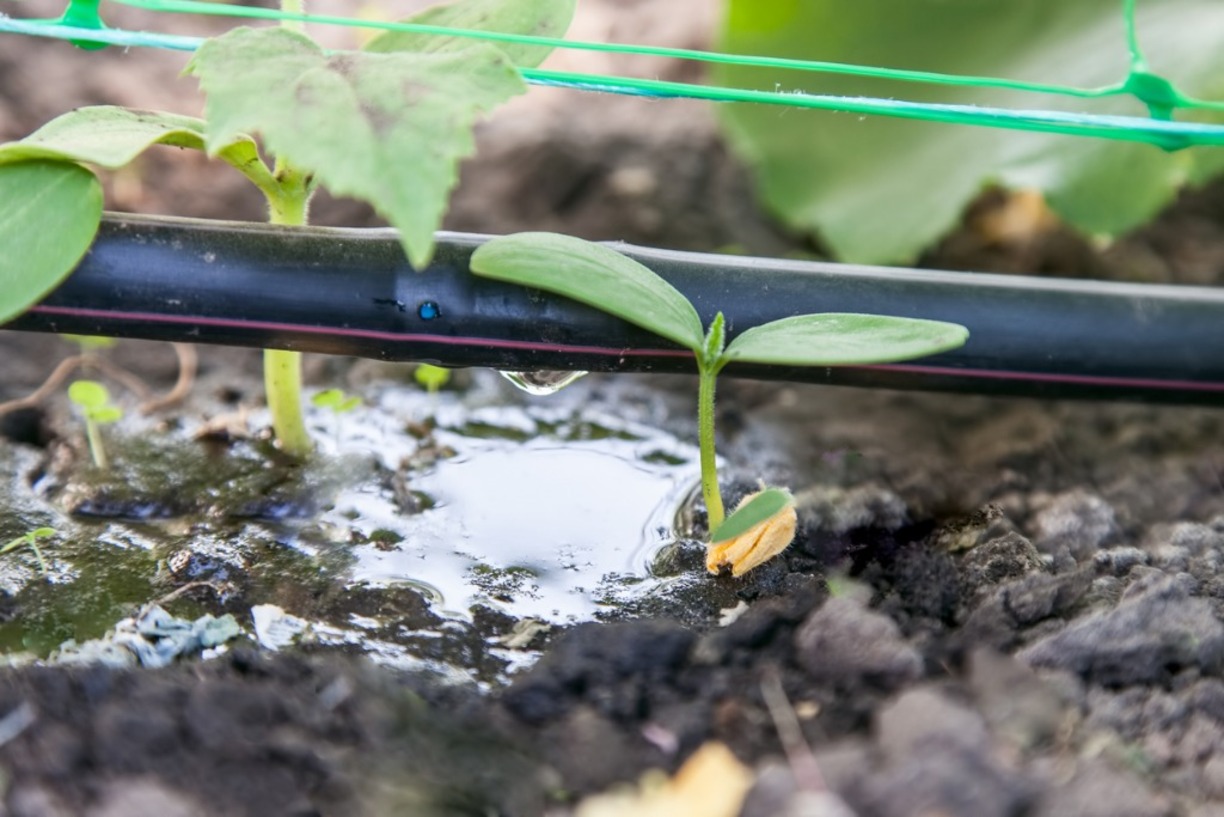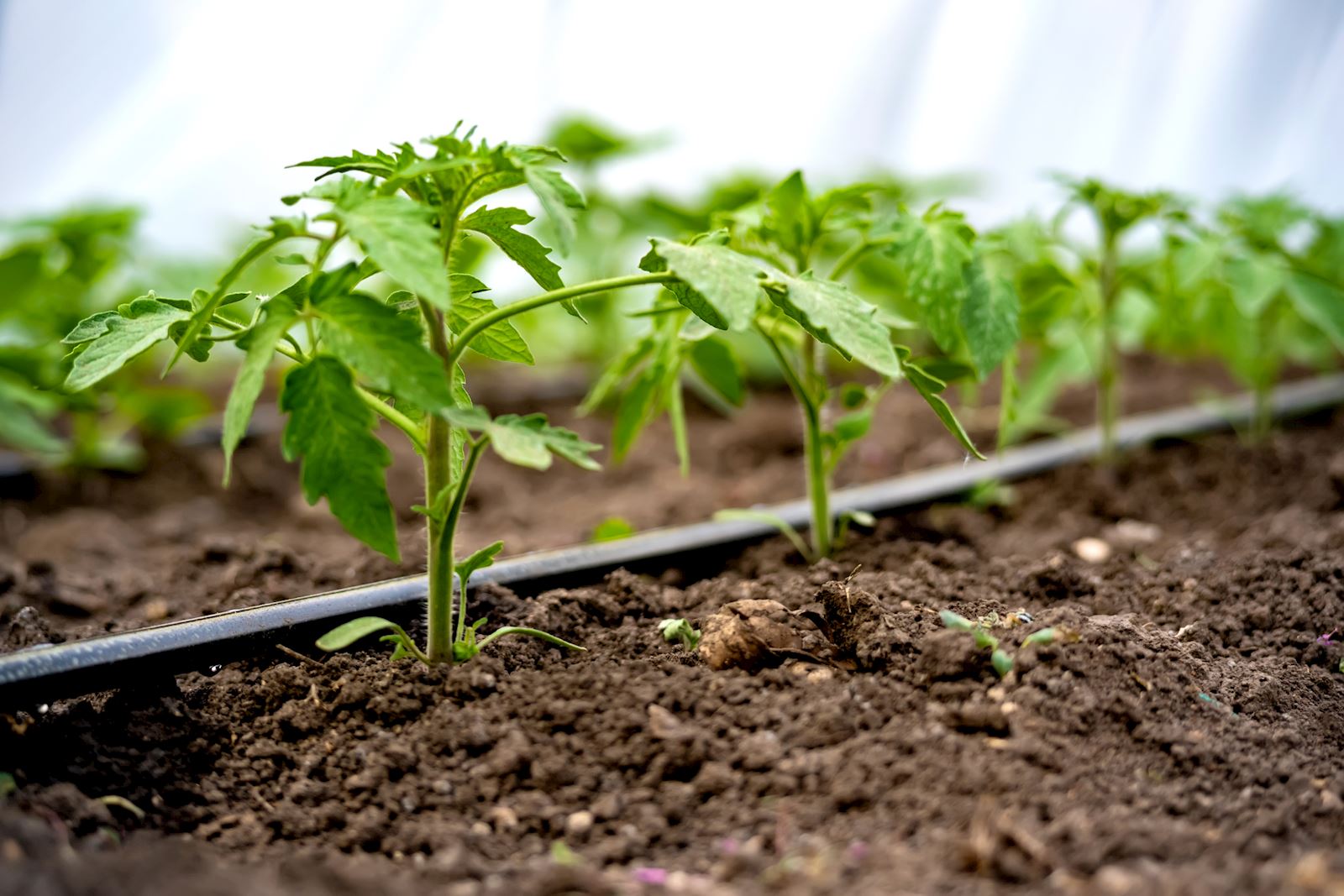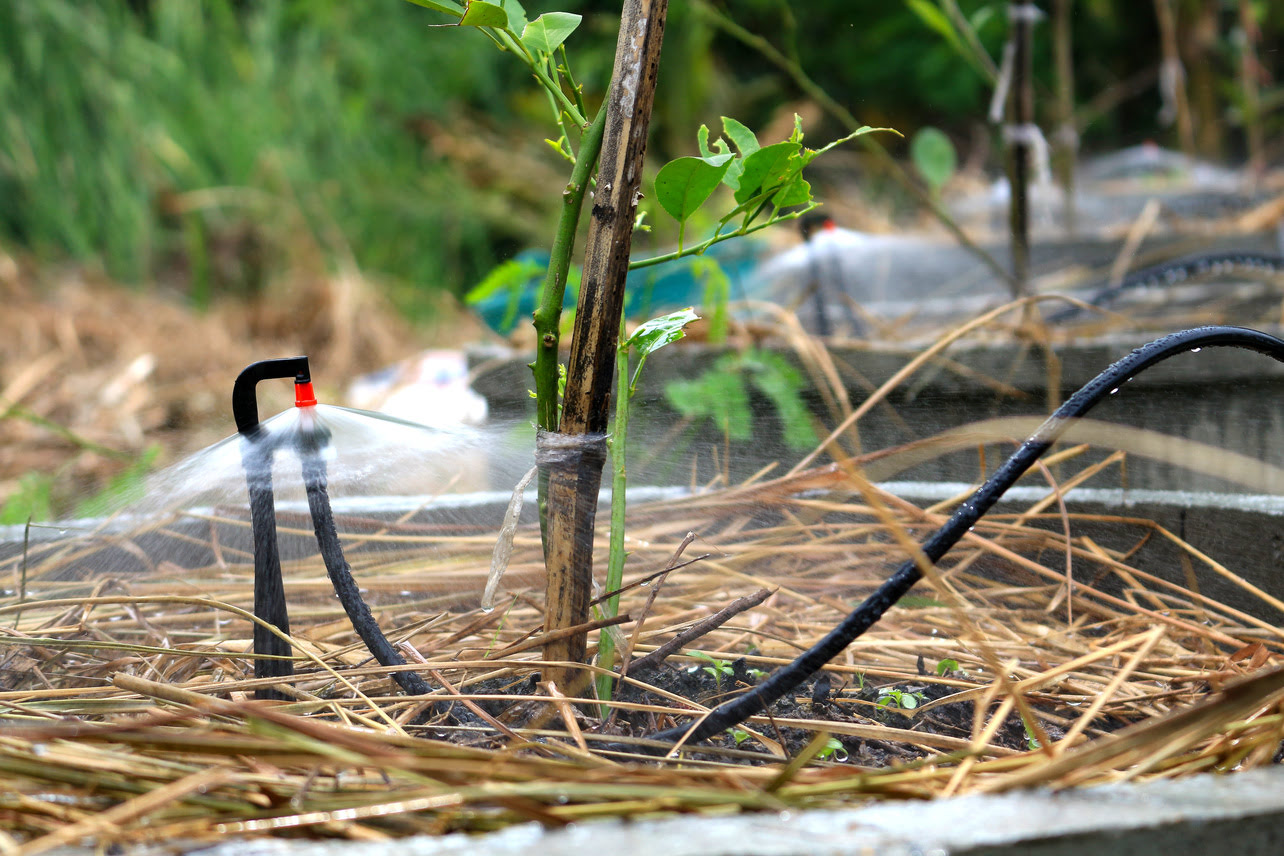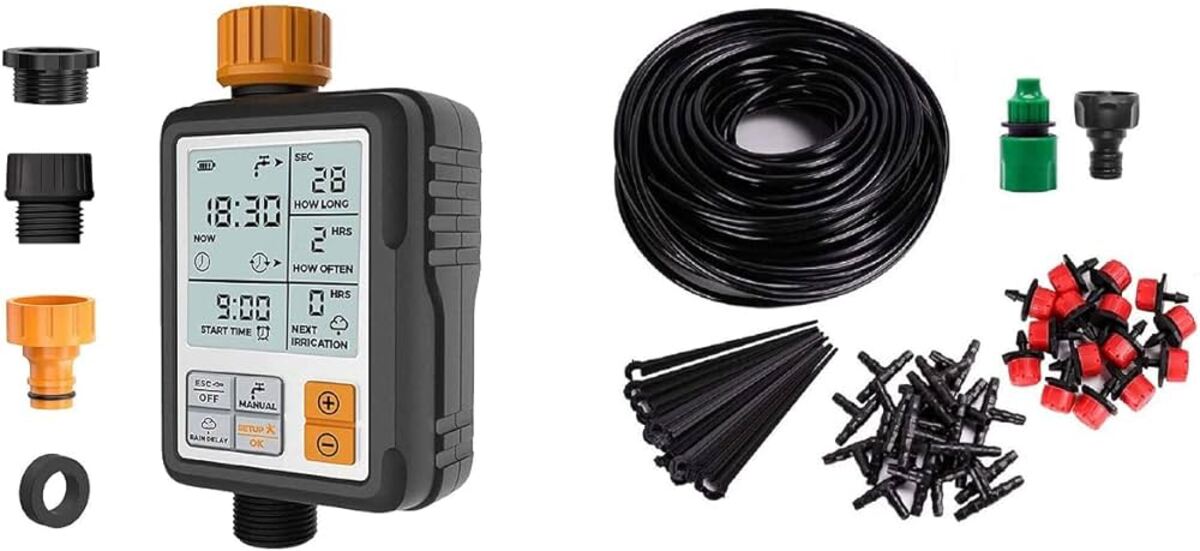Home>Gardening News and Trends>Latest News>When Was Drip Irrigation Invented
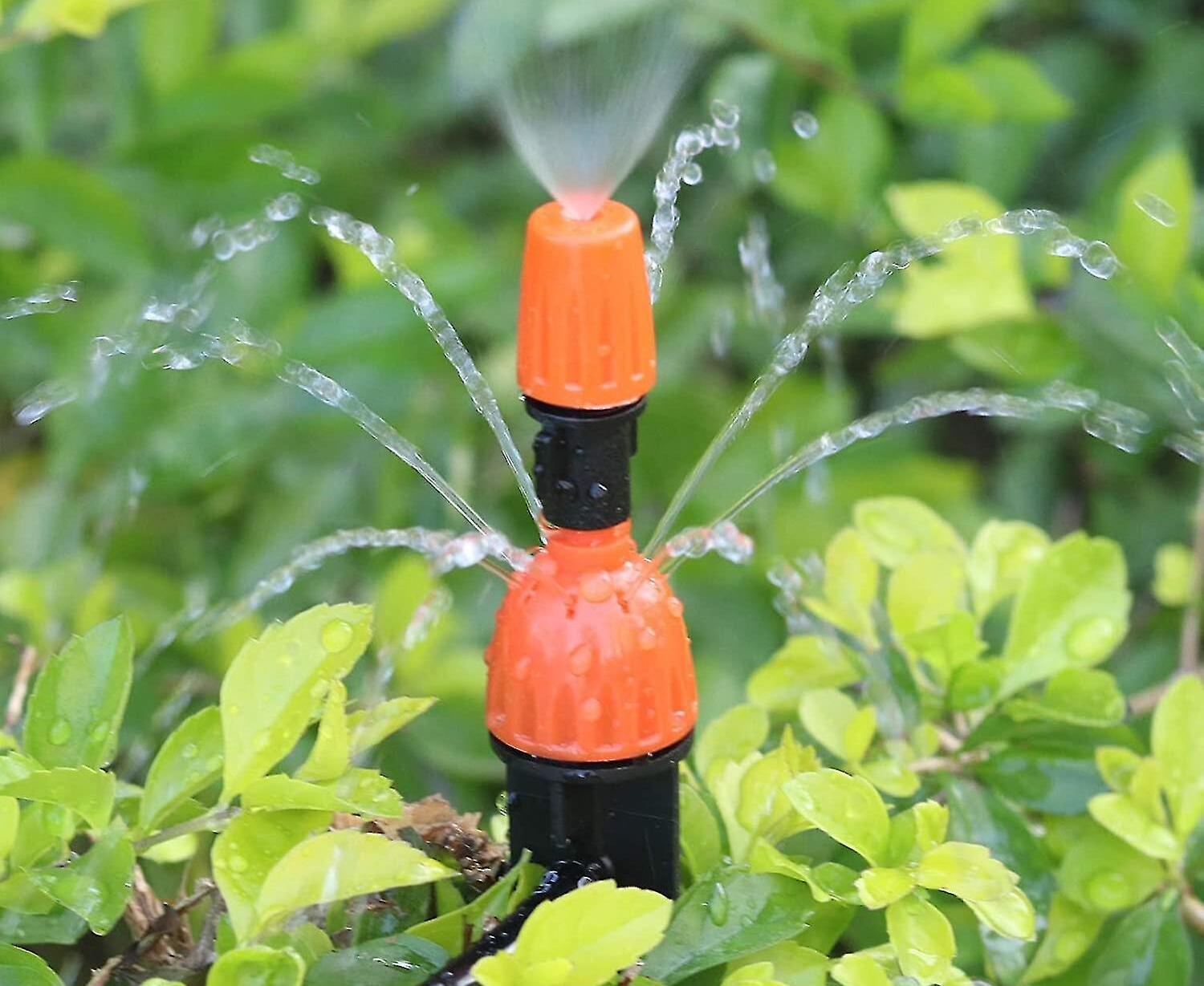

Latest News
When Was Drip Irrigation Invented
Modified: January 22, 2024
Discover the latest news about the invention of drip irrigation. Learn when and how this revolutionary irrigation method was developed and its impact on agriculture.
(Many of the links in this article redirect to a specific reviewed product. Your purchase of these products through affiliate links helps to generate commission for Chicagolandgardening.com, at no extra cost. Learn more)
Table of Contents
Introduction
Welcome to the world of drip irrigation, a revolutionary technology that has transformed the way we water plants and crops. Drip irrigation, also known as trickle irrigation or micro-irrigation, is a method of delivering water directly to the roots of plants through a network of tubes and emitters. This efficient and precise irrigation system has significantly improved water conservation, increased crop yields, and reduced labor and fertilizer costs.
In this article, we will delve into the fascinating history of drip irrigation, exploring its origins, development, and current trends. We will examine how this innovative technique was invented and how it has evolved over the years to become one of the most popular irrigation methods in the world. Additionally, we will highlight the numerous benefits and advantages of drip irrigation, as well as the latest trends and innovations in the field.
Drip irrigation has a rich history that stretches back thousands of years. It is believed to have originated in ancient civilizations such as Egypt and China, where farmers devised primitive systems to efficiently water their crops. However, it was not until the mid-20th century that the modern concept of drip irrigation as we know it today came into existence.
The invention of modern drip irrigation systems revolutionized agricultural practices around the world. This breakthrough technology allowed farmers to deliver water directly to the roots of plants, ensuring optimal hydration and minimizing water wastage. The efficiency and precision of drip irrigation systems have made them a preferred choice for farmers, gardeners, and landscapers in both commercial and residential settings.
Today, drip irrigation systems are widely adopted all over the globe, from arid regions to humid climates. The versatility and adaptability of this irrigation method have made it essential for various applications, including agriculture, horticulture, landscaping, and even home gardening. The popularity of drip irrigation continues to grow as people recognize its numerous benefits.
Definition of Drip Irrigation
Drip irrigation is a method of irrigating plants and crops by delivering water slowly and directly to the roots. Unlike traditional irrigation methods that flood the entire area, drip irrigation systems minimize water wastage by providing a controlled supply of water exactly where it is needed. This precise and efficient water delivery method ensures optimal plant growth, reduces water usage, and minimizes soil erosion.
The key components of a drip irrigation system include drip lines, emitters, filters, pressure regulators, and a water source. Drip lines are flexible tubes made of high-quality materials like polyethylene. They are installed along the rows of plants or crops, and emitters are attached to the lines at regular intervals. The emitters release water in small and measured quantities, either as drips or as a continuous flow, depending on the specific needs of the plants.
Filters are an essential part of a drip irrigation system as they remove any impurities or debris from the water, preventing clogging of the emitters. Pressure regulators ensure that the water flow remains consistent and at an optimal level. A water source, which could be a well, a lake, or a reservoir, supplies water to the system through pipes and valves.
One of the significant advantages of drip irrigation is its ability to deliver water directly to the plant’s root zone. This targeted approach allows plants to absorb water more efficiently, reducing evaporation and ensuring maximum utilization of the water supply. By supplying moisture directly to the roots, drip irrigation systems help prevent fungal diseases and reduce weed growth, as the foliage and surrounding areas remain dry.
In addition to delivering water, drip irrigation systems can also be used to administer fertilizers, nutrients, and even pesticides. This method, known as fertigation, allows for the precise application of these substances, ensuring that plants receive the necessary nutrients without waste or runoff.
Overall, drip irrigation offers numerous advantages over traditional irrigation methods. It conserves water, saves time and labor, reduces fertilizer and pesticide usage, and promotes healthier plant growth. These benefits make drip irrigation a popular choice for both small-scale and large-scale agricultural operations, as well as for residential gardens and landscapes.
Early History
The concept of drip irrigation can be traced back to ancient civilizations where innovative techniques were developed to efficiently water crops in arid regions. The earliest recorded evidence of drip irrigation dates back to approximately 6000 BCE in ancient Egypt. Farmers in the Nile River Valley created clay pots, known as ollas, which were buried in the ground near plants to slowly release water to the roots.
In ancient China, a similar method called “pitcher irrigation” was practiced. Farmers would bury unglazed clay pots or bamboo tubes in the soil next to plants, allowing water to slowly seep out and reach the roots. This technique, along with others like furrow irrigation and flooding, helped sustain agriculture in areas with limited water supply.
Throughout history, different cultures and regions developed their own variations of drip irrigation systems. In the Middle East, for example, buried clay pots known as “diasporas” were employed to water plants. These pots were filled with water and buried in the ground, allowing the moisture to gradually seep out and provide hydration to crops.
In the 20th century, with advancements in technology, drip irrigation systems began to evolve and become more efficient. In the early 1930s, an Australian engineer named Leonard H. Maxwell invented the first efficient drip irrigation system known as the “Leaky Pipe.” This system used perforated pipes made from concrete or asbestos cement to deliver water directly to the plant roots.
In the 1960s, the development of plastic materials revolutionized drip irrigation. Plastic tubing replaced the concrete and asbestos pipes, making the systems more flexible, easier to install, and less susceptible to damage. This breakthrough allowed for the commercial production and widespread adoption of drip irrigation systems around the world.
It is important to note that while drip irrigation has ancient roots, it was the modern innovations and technological advancements that transformed it into a highly efficient and widely used irrigation method. The contributions of engineers, scientists, and agriculturists over the years have made drip irrigation what it is today: a game-changer in sustainable agriculture and water management.
The Invention of Modern Drip Irrigation Systems
The invention of modern drip irrigation systems in the mid-20th century marked a significant advancement in agricultural practices. The development of these systems brought about a revolution in water conservation, crop yields, and agricultural sustainability.
One of the pioneers in the field of modern drip irrigation was Simcha Blass, an Israeli engineer. In the 1960s, Blass, along with his son Yeshayahu, co-invented the first practical and efficient drip irrigation system that utilized plastic tubing. Their invention, known as the “T-tape,” consisted of thin-walled plastic tape with built-in emitters spaced at regular intervals.
The T-tape delivered water directly to the plant roots, minimizing evaporation and maximizing water absorption. It offered a more controlled and precise method of irrigation compared to traditional techniques. The Blass family’s innovative drip irrigation system revolutionized agriculture in arid regions, allowing farmers to cultivate crops in areas where water scarcity was a significant challenge.
This groundbreaking invention was followed by further advancements in drip irrigation technology. In the United States, the company Toro introduced the first pressure-compensating drip irrigation system in the 1970s. This system ensured a consistent water flow rate across the entire field, regardless of variations in terrain or elevations. The ability to maintain uniform irrigation was a game-changer for large-scale agricultural operations.
The development of drip irrigation systems did not stop there. Over the years, many other companies and researchers have contributed to the improvement and diversification of the technology. Emitters with different flow rates and configurations were introduced to accommodate different soil types, plant varieties, and irrigation requirements.
Today, modern drip irrigation systems offer a wide range of options and features. Farmers can choose from various types of emitters, such as drippers, micro-sprinklers, or inline drippers, depending on their specific needs. The systems can be customized based on factors like crop spacing, soil conditions, and water availability.
Furthermore, technological advancements have led to the development of smart and automated drip irrigation systems. These systems utilize sensors, controllers, and weather data to adjust irrigation schedules and optimize water usage. They enable precise monitoring and management, ensuring that plants receive the right amount of water at the right time.
The invention and evolution of modern drip irrigation systems have transformed agriculture worldwide. This efficient and sustainable irrigation method has not only increased crop yields but also contributed to water conservation and reduced environmental impact. With continuous research and innovation, drip irrigation is poised to play a vital role in addressing the global challenges of food security and water scarcity.
Development and Adoption of Drip Irrigation Technology
Since its invention, drip irrigation technology has come a long way in terms of development and adoption. The recognition of its numerous benefits, coupled with advancements in materials and techniques, has paved the way for widespread adoption in various agricultural sectors.
In the early years, drip irrigation systems were primarily used in arid regions where water scarcity posed a major challenge. Countries like Israel, Australia, and parts of the United States with dry climates were among the first to embrace this technology. Farmers in these regions saw remarkable improvements in crop yields and water efficiency, which further spurred the adoption of drip irrigation.
As awareness of the advantages of drip irrigation spread, its application expanded to other parts of the world. Farmers and agricultural experts recognized the potential of this technology to conserve water, reduce labor costs, and improve crop health. Today, drip irrigation is commonly used in both large-scale agricultural operations and small-scale farms, as well as in gardens, vineyards, and nurseries.
The adoption of drip irrigation technology has been aided by the development of irrigation associations and organizations dedicated to promoting sustainable water management. These groups provide training, education, and resources to farmers and communities, advocating for the implementation of drip irrigation systems.
Government support and incentives have also played a crucial role in the widespread adoption of drip irrigation. In some countries, governments offer financial assistance or tax benefits to farmers who invest in water-saving technologies like drip irrigation. This support encourages farmers to transition from traditional irrigation methods to more efficient and sustainable options.
Furthermore, advancements in manufacturing processes have made drip irrigation systems more affordable and accessible. The production of high-quality plastic tubing, emitters, and other components has reduced costs and improved the durability and efficiency of the systems. This has made drip irrigation an attractive option for farmers of all scales, regardless of their geographical location.
Over time, the benefits of drip irrigation have become widely recognized. The system’s ability to deliver water precisely to the plant roots promotes healthier growth while minimizing water wastage. Drip irrigation also reduces soil erosion, decreases weed growth, and minimizes the risk of diseases and pests associated with traditional overhead irrigation methods.
As a result, the use of drip irrigation is no longer limited to arid regions. Farmers in diverse climates around the world, such as Mediterranean regions, humid tropics, and even cooler temperate zones, have embraced this technology. It has proven effective in a wide range of crops, including fruits, vegetables, row crops, and even landscaping applications.
Overall, the development and adoption of drip irrigation technology have been driven by its ability to address water scarcity challenges, improve crop productivity, and promote sustainable agriculture. As water resources continue to be scarce and climate change poses additional challenges, the importance of drip irrigation in efficient and responsible water management will only continue to grow.
Benefits and Advantages of Drip Irrigation
Drip irrigation offers numerous benefits and advantages compared to traditional irrigation methods. Its efficient and targeted water delivery system provides several advantages that contribute to enhanced crop health, increased productivity, and sustainable water management.
Water Conservation: Drip irrigation is highly efficient in water usage. By delivering water directly to the plant roots, it minimizes evaporation and runoff, ensuring that the water reaches the intended target. This precision allows for significant water savings, making drip irrigation an environmentally friendly and sustainable option.
Enhanced Plant Health and Growth: The controlled and consistent water supply of drip irrigation ensures that plants receive the optimal moisture levels they need for healthy growth. By preventing overwatering, as well as keeping foliage and fruit dry, drip irrigation reduces the risk of fungal diseases, pest infestations, and weed growth.
Reduced Soil Erosion: Traditional irrigation methods, such as sprinklers or flood irrigation, can cause soil erosion. Drip irrigation minimizes soil erosion as water is applied directly to the root zone, avoiding excessive runoff and surface movement.
Customization and Flexibility: Drip irrigation systems offer flexibility and customization options. Farmers can adjust the flow rate and timing of water delivery to meet the specific needs of different crops, soil types, and stages of plant growth. This adaptability ensures optimal water utilization and promotes healthier plant development.
Labour and Time Savings: Drip irrigation requires less labor compared to traditional irrigation methods. Once the system is properly set up and installed, it operates on its own, reducing the need for manual watering or monitoring. This time-saving aspect allows farmers to focus on other important farming activities.
Reduced Fertilizer and Pesticide Usage: Drip irrigation systems can be integrated with fertigation, the process of delivering fertilizers and nutrients directly to the plant roots through the irrigation system. This targeted application reduces fertilizer and pesticide wastage, allowing for precise and efficient plant nourishment.
Improved Crop Yields and Quality: The consistent and optimal water supply provided by drip irrigation promotes better crop yields and improved crop quality. Plants receive the necessary moisture and nutrients, resulting in healthier and more productive plants.
Adaptability to Various Terrains: Drip irrigation systems can be installed on a variety of terrains, including slopes and uneven surfaces. This adaptability allows farmers to maximize land utilization and cultivate crops on challenging landscapes.
Environmental Sustainability: By minimizing water wastage and reducing the use of fertilizers and pesticides, drip irrigation contributes to environmental sustainability. It aligns with the goal of responsible water management and conservation, ensuring the long-term viability of agricultural practices.
In summary, drip irrigation offers a wide range of benefits and advantages, including water conservation, enhanced plant health, reduced soil erosion, customization options, labor and time savings, reduced fertilizer and pesticide usage, improved crop yields and quality, adaptability to various terrains, and environmental sustainability. These advantages have contributed to the widespread adoption and recognition of the importance of drip irrigation in modern agricultural practices.
Current Trends and Innovations in Drip Irrigation
Drip irrigation has witnessed significant advancements and innovations in recent years, driven by the growing demand for sustainable agriculture and efficient water management. Here are some of the current trends and innovations in drip irrigation:
1. Smart Irrigation Systems: The integration of technology and irrigation has led to the development of smart irrigation systems. These systems utilize data from sensors, weather forecasts, and soil moisture meters to optimize irrigation schedules and water delivery. They enable farmers to monitor and control their drip irrigation systems remotely, enhancing water conservation and crop health.
2. Precision Agriculture: Drip irrigation is a key component of precision agriculture, a farming approach that leverages technology and data to make precise and informed decisions. By combining GPS, remote sensing, and variable rate technologies, farmers can tailor irrigation and fertilizer applications to specific areas of their fields, maximizing resource efficiency and crop productivity.
3. Micro-Irrigation Techniques: Micro-irrigation techniques are gaining popularity in drip irrigation systems. These techniques involve the use of precise emitters, such as micro-sprinklers and micro-sprayers, to deliver water in fine droplets. This approach allows for better coverage and distribution, especially in areas with high wind or sandy soils.
4. Water-Saving Filtration Systems: Improving the filtration process is a focus in modern drip irrigation systems. Advanced filtration technologies, such as self-cleaning filters and screen filters, prevent clogging of emitters, ensuring uninterrupted water flow. These water-saving filtration systems reduce maintenance needs and improve the efficiency of drip irrigation systems.
5. Sustainable Materials: The materials used in drip irrigation systems are evolving to be more sustainable and environmentally friendly. Manufacturers are exploring alternatives to conventional plastics, such as biodegradable or compostable materials, to reduce the environmental impact of these systems. Additionally, the use of recycled materials in the production of drip irrigation components is becoming more prevalent.
6. Subsurface Drip Irrigation (SDI): Subsurface drip irrigation involves placing drip lines underground, delivering water directly to the root zone. This technique reduces water loss from evaporation and improves water-use efficiency. SDI is especially beneficial for high-value crops and regions with water scarcity, as it minimizes weed growth, allows for mechanical cultivation, and enhances nutrient uptake.
7. Automation and Robotics: The automation of drip irrigation systems is progressing rapidly. Robotic systems are being developed to autonomously monitor and manage irrigation, adjusting water delivery based on real-time data. These automated systems optimize water application, reduce labor requirements, and ensure consistent and targeted irrigation.
8. Integration with Renewable Energy: Drip irrigation systems are increasingly being integrated with renewable energy sources. Solar-powered pumps, for example, provide a sustainable energy solution to power irrigation systems. This integration reduces operational costs and reliance on fossil fuels, making drip irrigation more environmentally friendly and economically viable.
As the demand for sustainable farming practices and efficient water usage continues to grow, the future of drip irrigation holds promising advancements. From smart technology to precision agriculture and sustainable materials, innovative solutions in drip irrigation are revolutionizing the agricultural landscape and leading the way towards a more sustainable and productive future.
Conclusion
Drip irrigation has revolutionized the way we approach agricultural water management. Throughout its rich history, this innovative irrigation method has evolved from ancient techniques to advanced modern systems that optimize water efficiency and plant health.
The benefits of drip irrigation are numerous and far-reaching. Its precise water delivery system conserves water, reduces soil erosion, and promotes sustainable agriculture. By delivering water directly to the root zone, drip irrigation improves crop yields and quality while minimizing fungal diseases, pests, and weeds.
The development and adoption of modern drip irrigation systems have been key factors in its success. Innovations such as the T-tape and pressure-compensating emitters have made drip irrigation accessible and adaptable to various farming requirements and terrains.
Current trends and innovations, including the integration of technology with drip irrigation, precision agriculture techniques, micro-irrigation approaches, smart systems, and sustainable materials, continue to push the boundaries of water conservation and crop productivity.
Drip irrigation is not only a solution for arid regions but also a valuable tool for farmers around the world. From small-scale operations to large commercial farms, drip irrigation systems offer a customizable and scalable approach to water management, improving the efficiency and sustainability of agricultural practices.
As the global challenges of water scarcity and food security continue to grow, drip irrigation will play a crucial role in mitigating these issues. Its ability to optimize water resources, reduce environmental impact, and improve agricultural productivity makes it a sustainable solution for the future.
In conclusion, drip irrigation has transformed agricultural practices, helping farmers meet the demands of a growing population while minimizing water usage and maximizing crop productivity. By embracing the principles of efficiency, precision, and sustainability, drip irrigation ensures the long-term viability of agriculture and contributes to a more sustainable and food-secure world.

